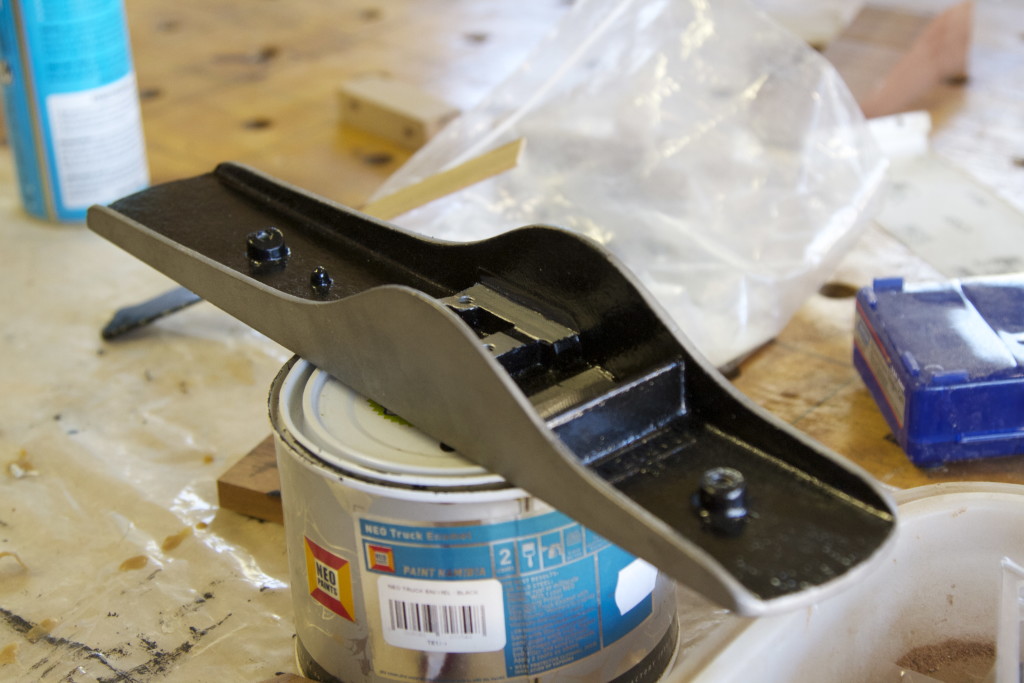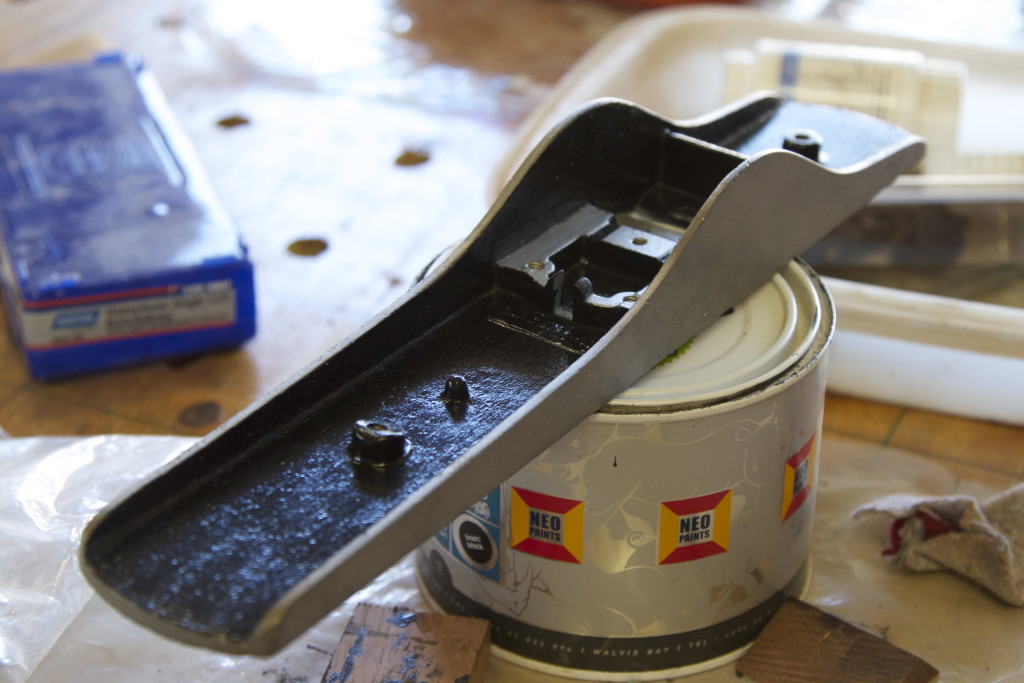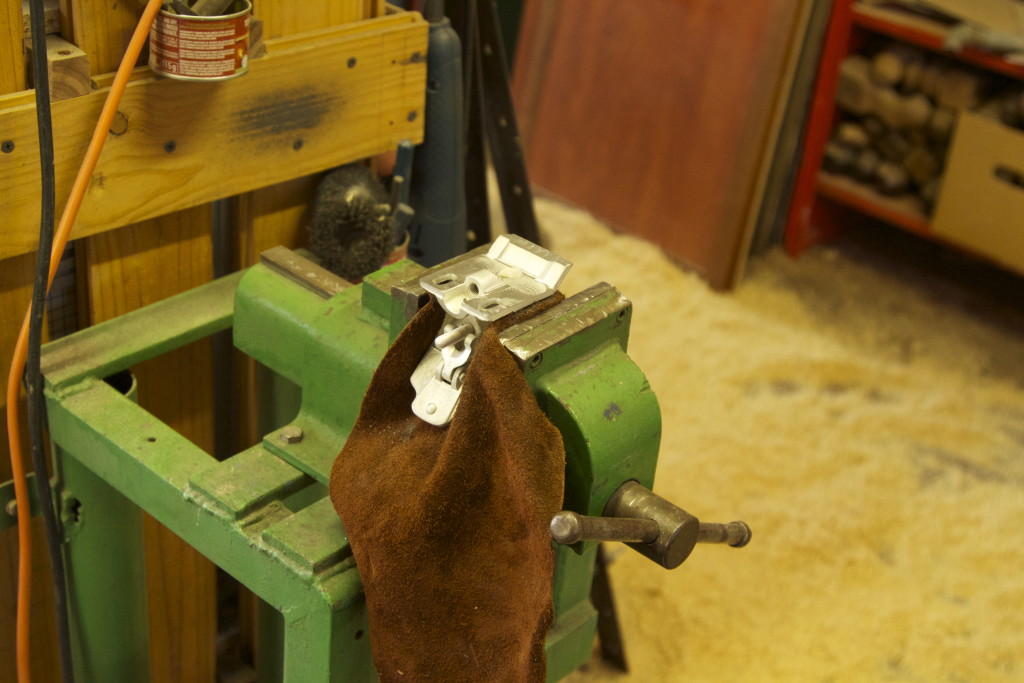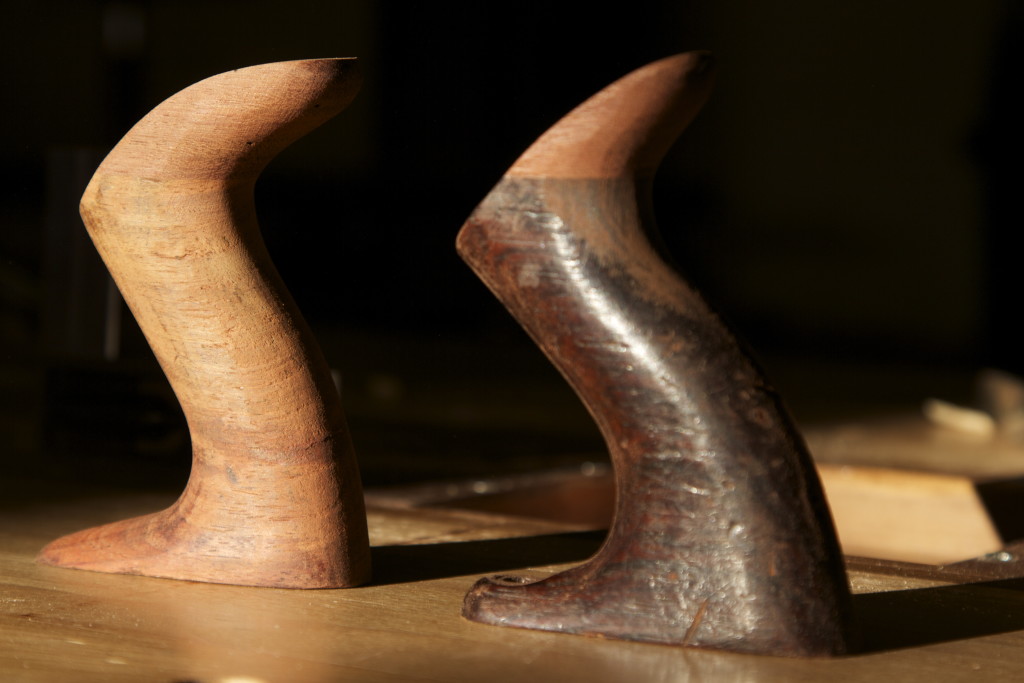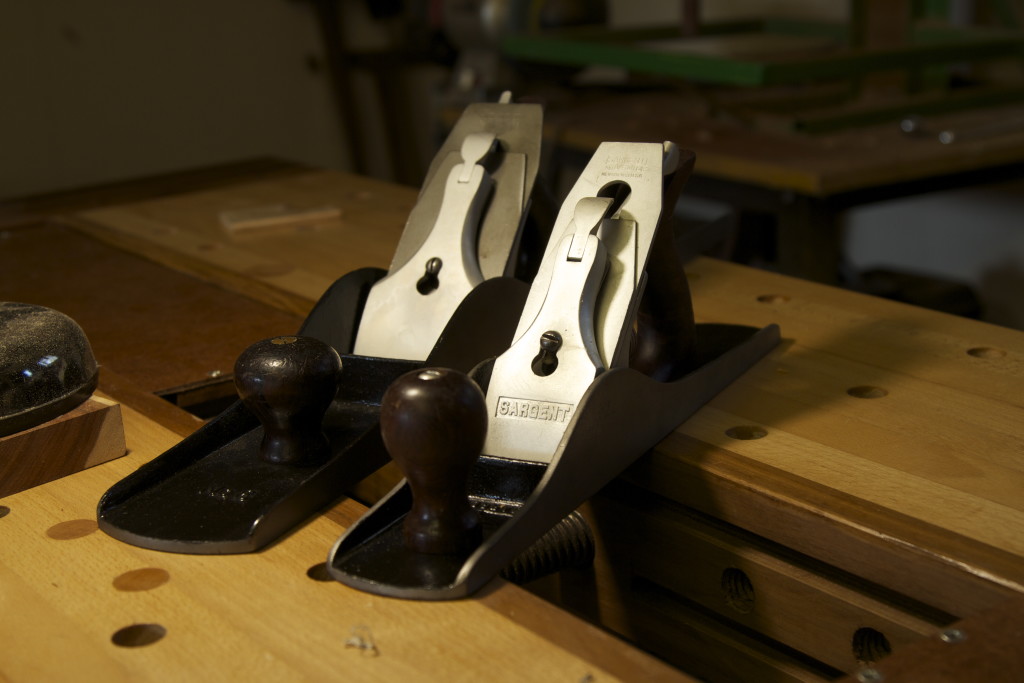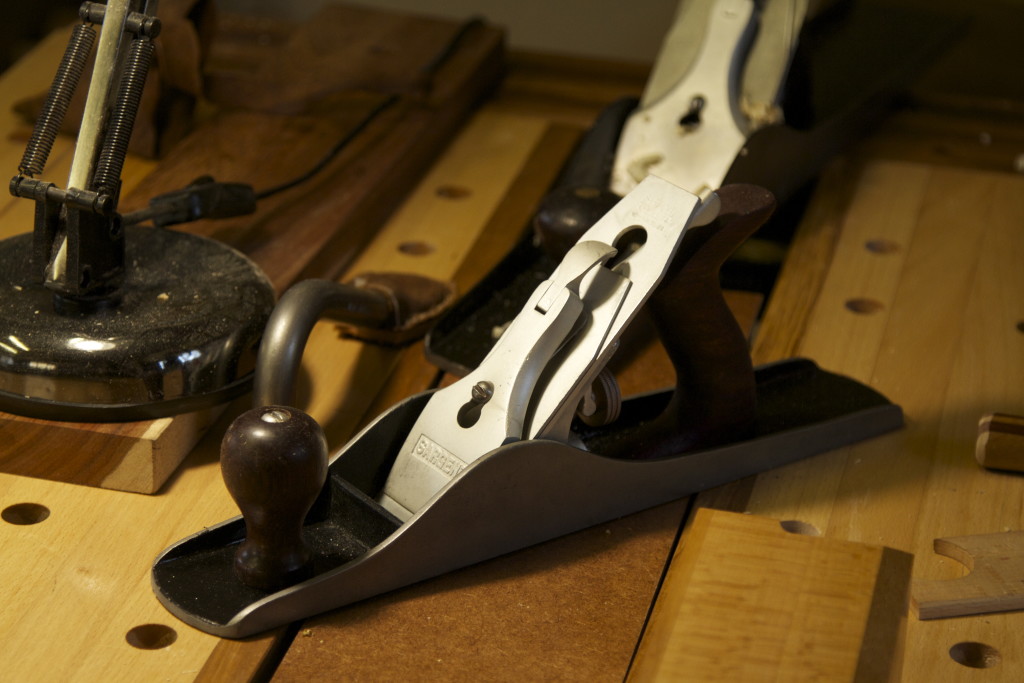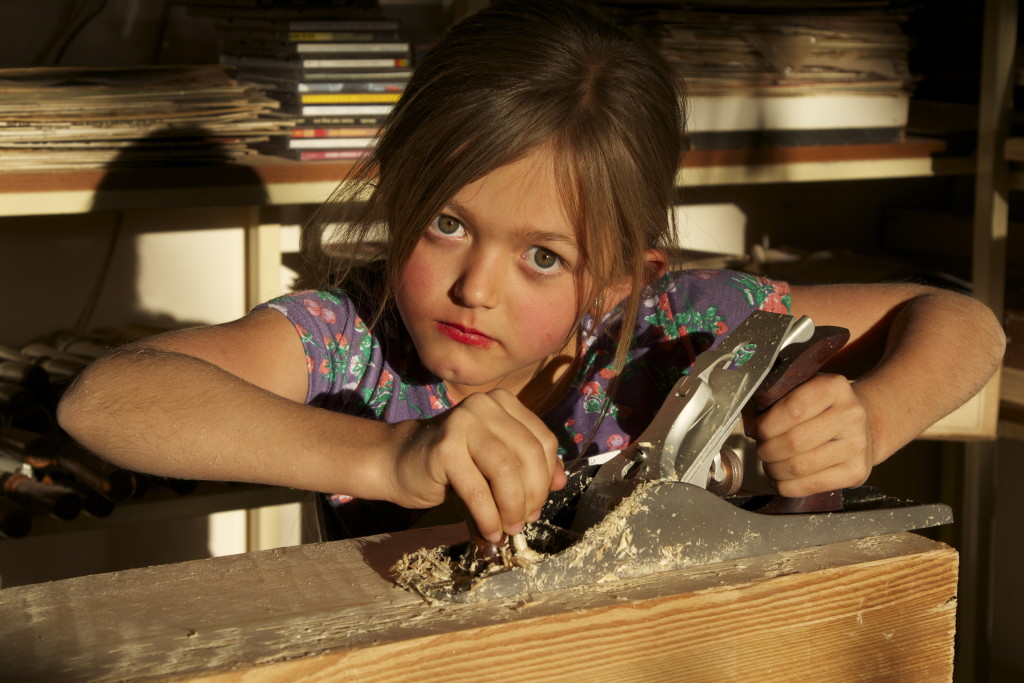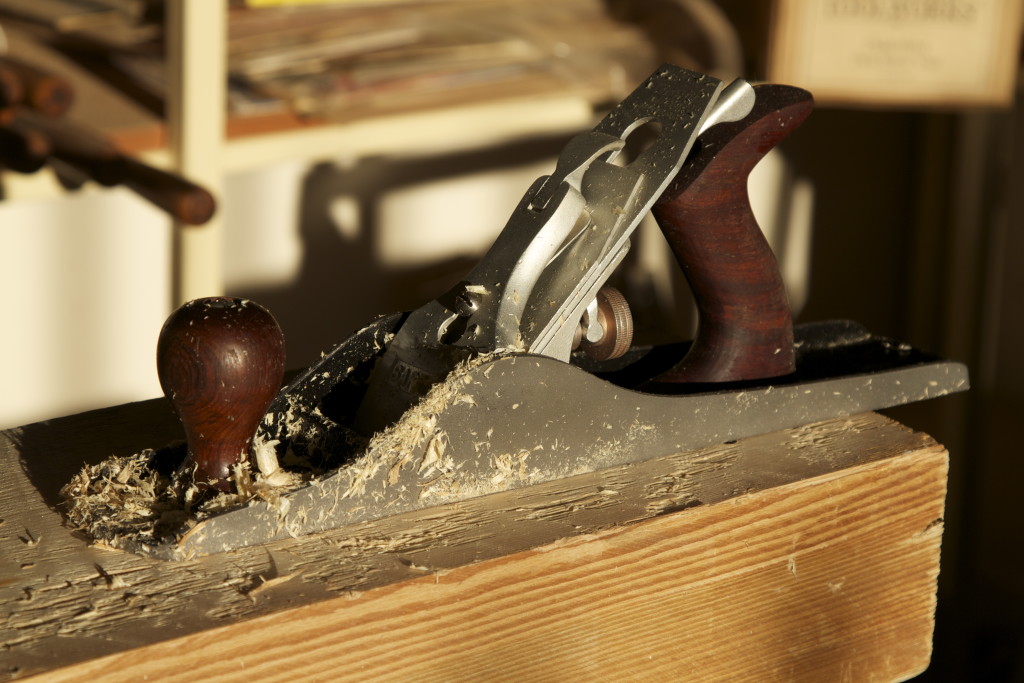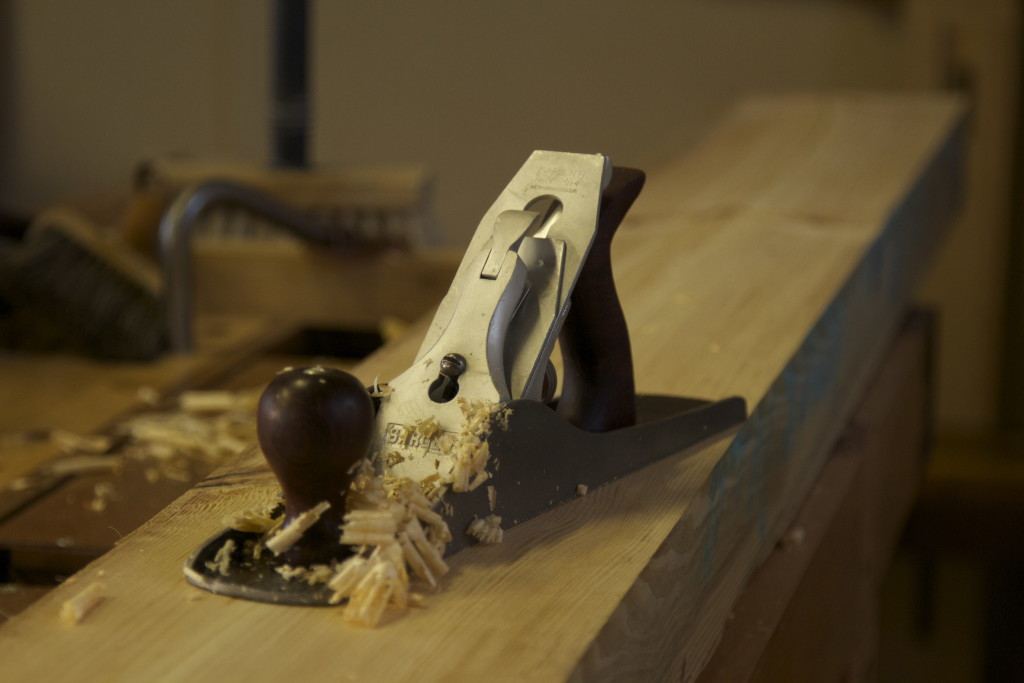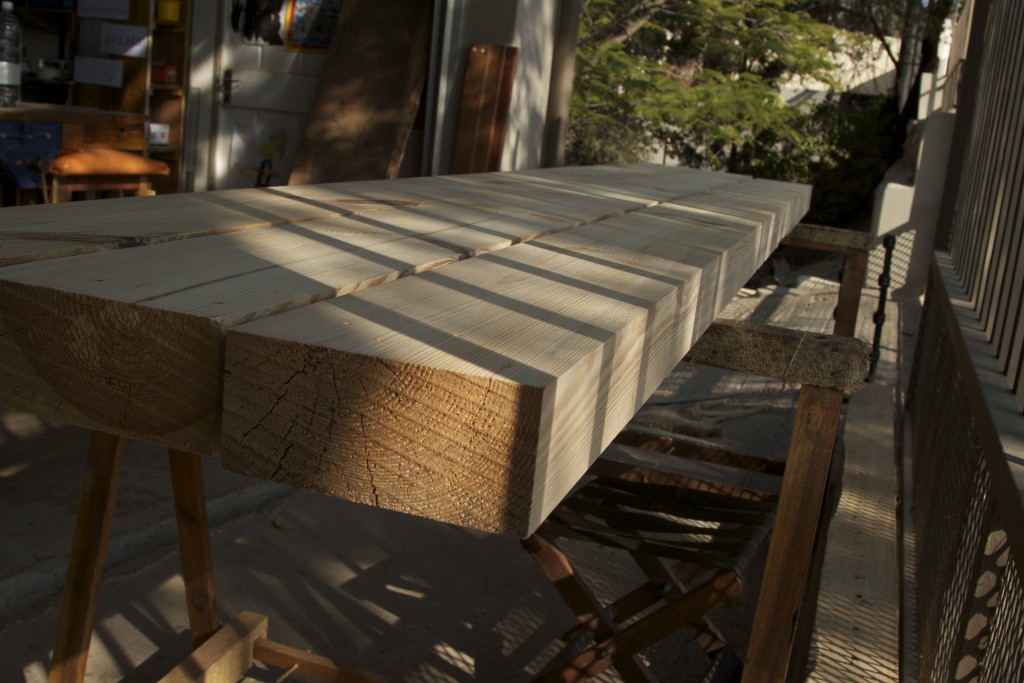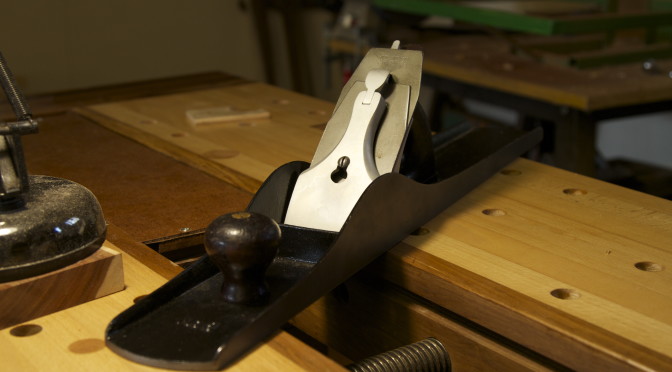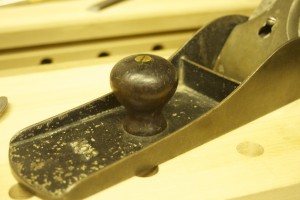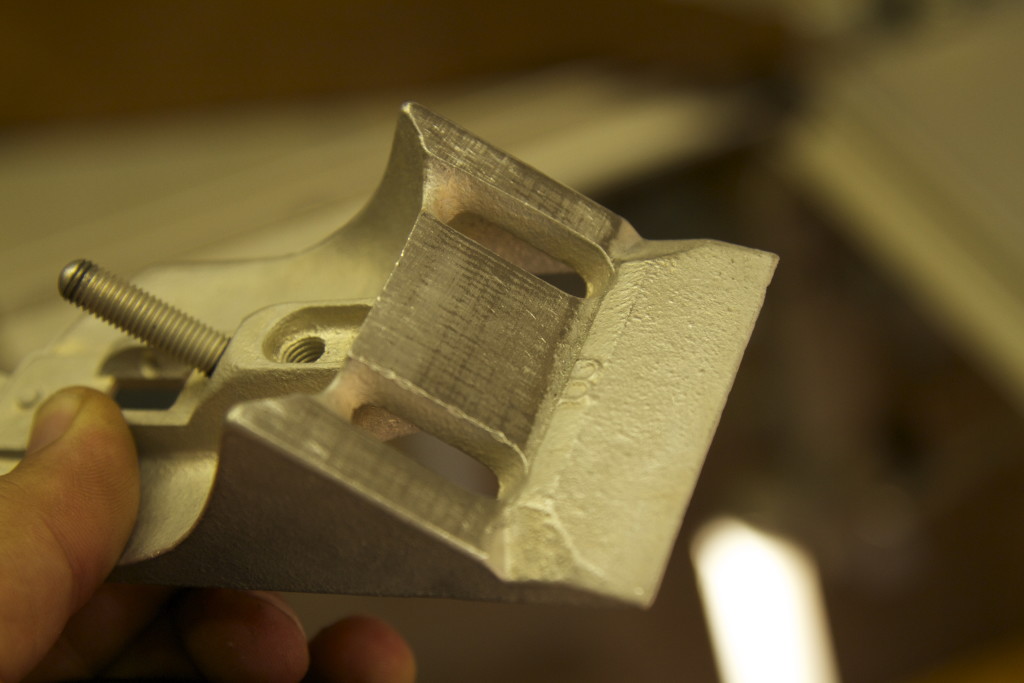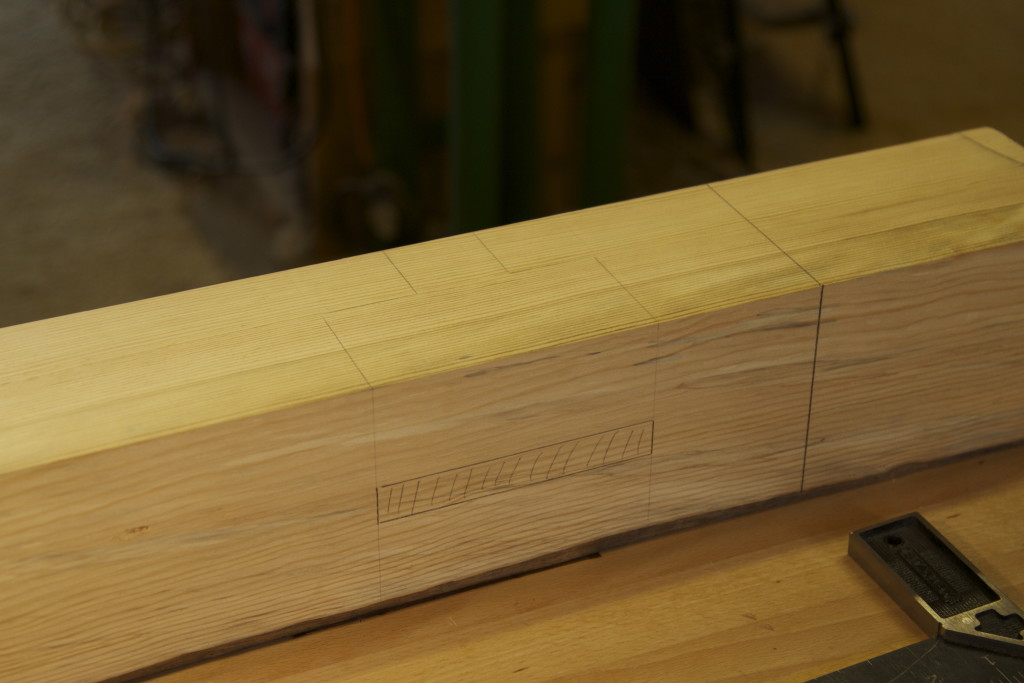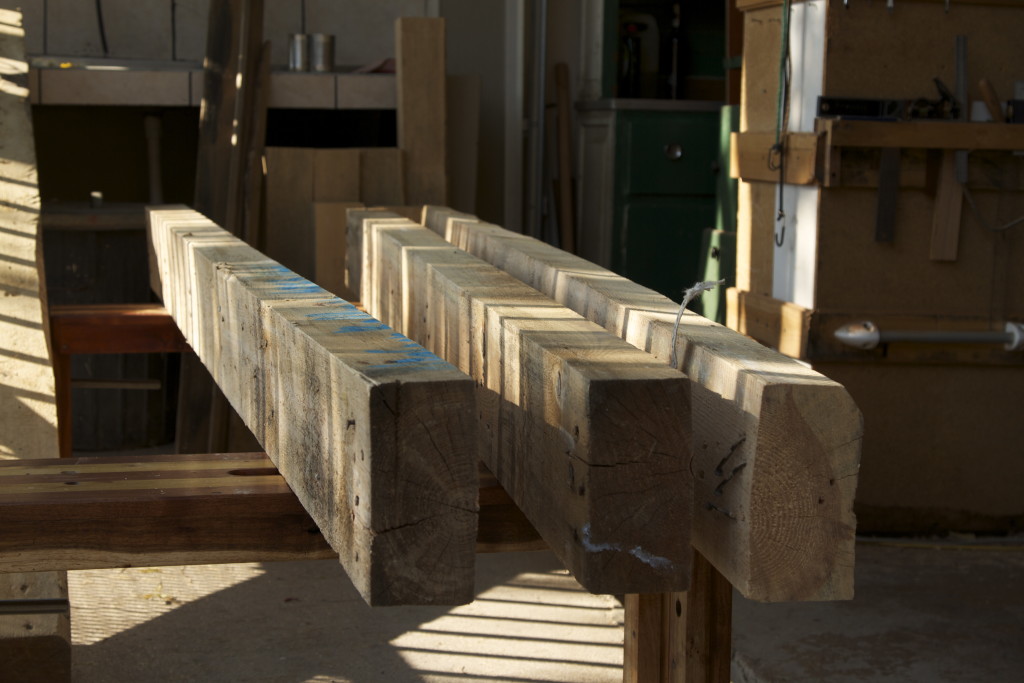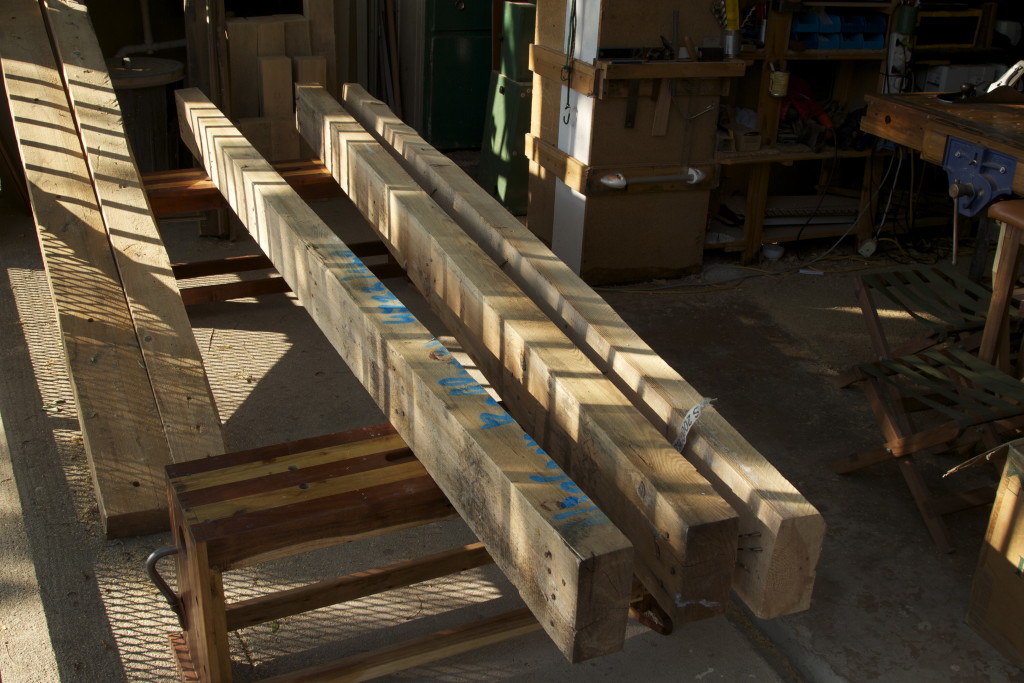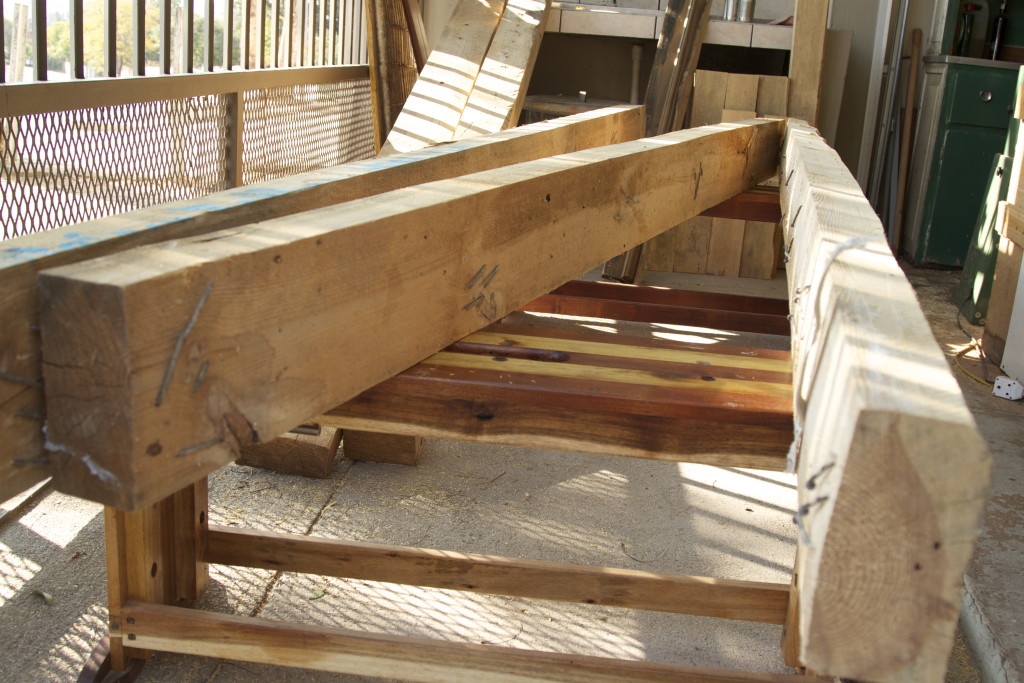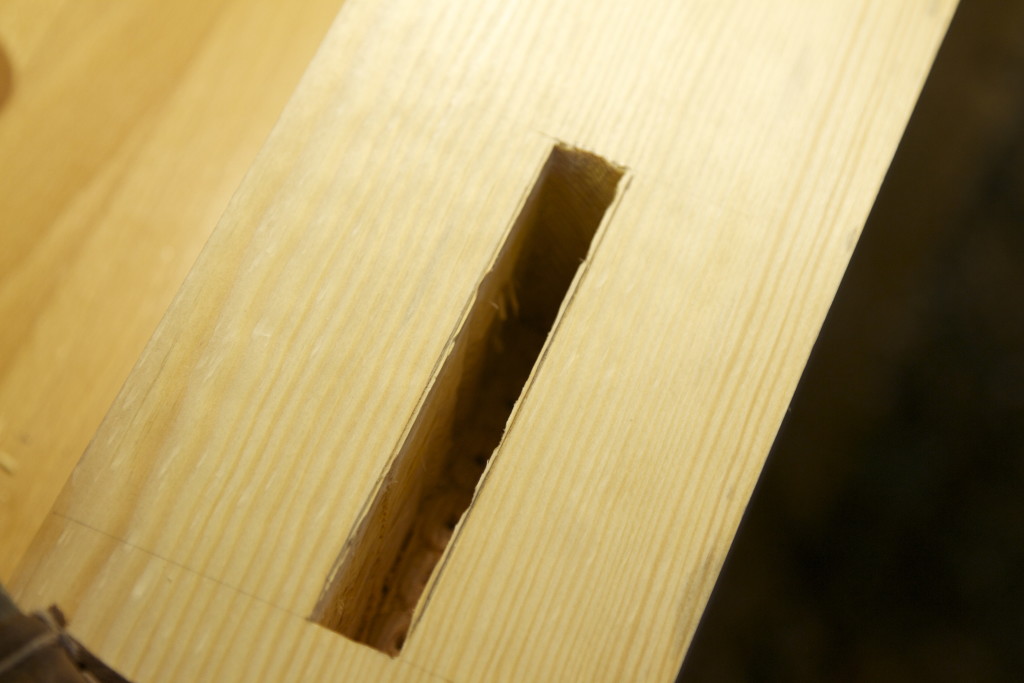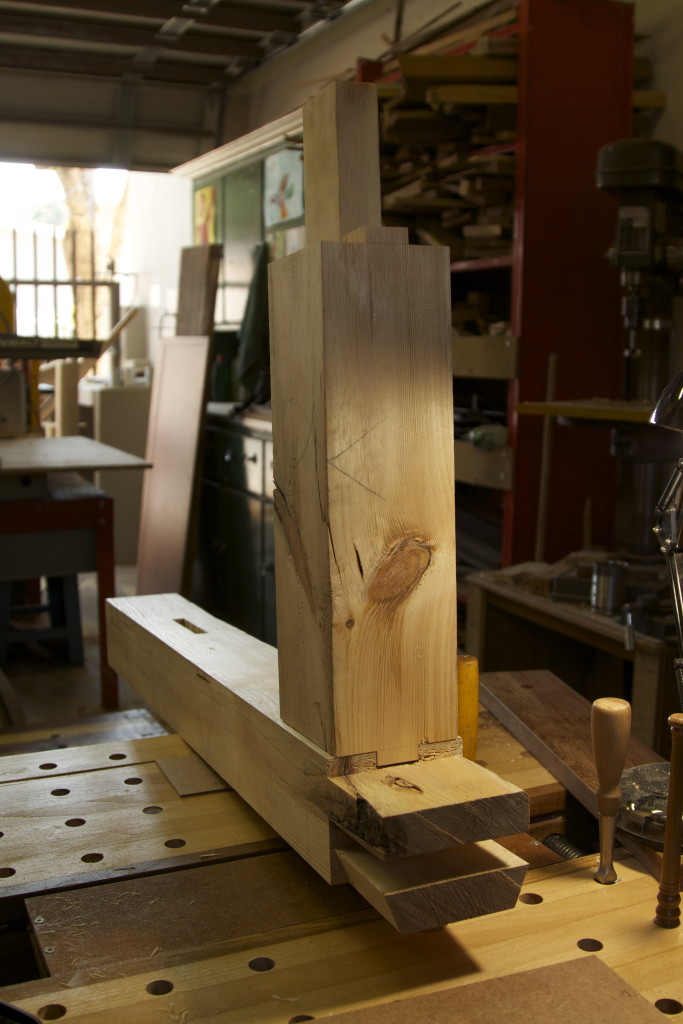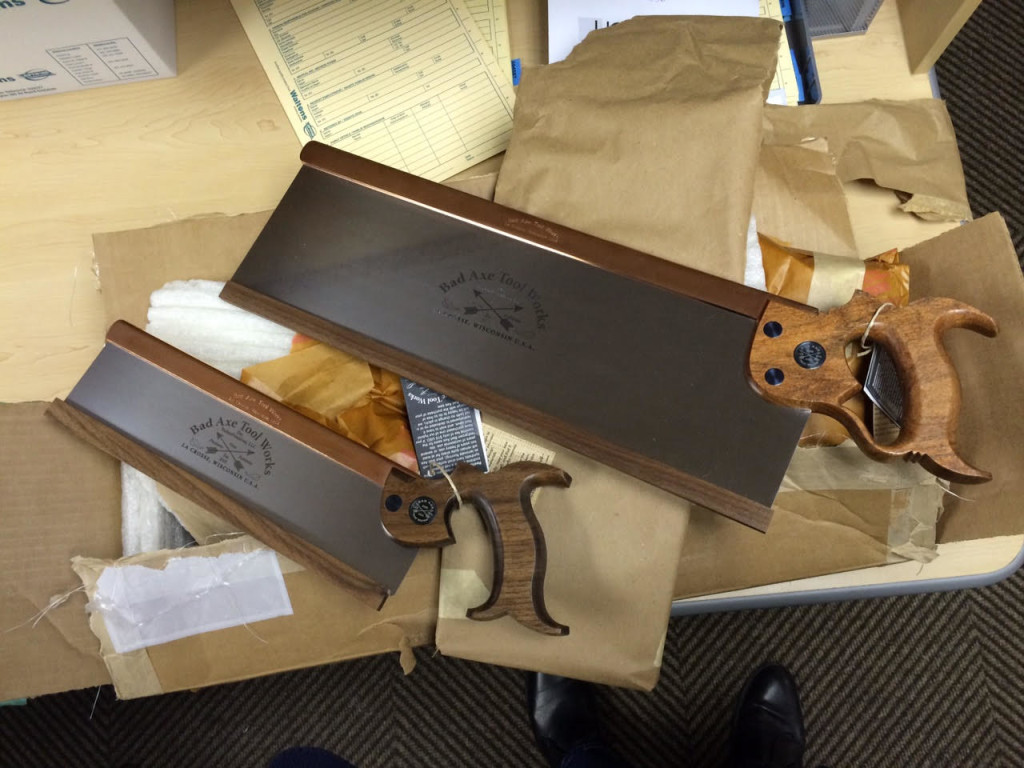July 2014
I bought this plane back in July 2014 from Patrick Leach. It is a Sargent no. 14C Jack plane. This is Sargent’s equivalent of a Stanley no. 5. It is known as a Shaw’s Patent, after it’s inventor who was assigned the patent for this plane’s adjustable frog on the 3rd of July 1906. If you want to know more you can go here and read Patrick Leach’s so called “Blood and Gore”.
From what I can deduct they were only made between 1910 and 1918. What is confusing though, is that I also found a type study on these planes that dates the different appearances of the trademark on the lever cap. According to that, this plane is a type 4, and is dated as 1919-1942. So maybe that means that the main casting dates back to 1910-1918 and the levercap from a bit later, not sure.
In the picture below it is the plane at the top. It was taken prior to it’s trans-Atlantic journey. The plane actually traveled in two different shipments. I received the frog, blade, chip breaker, tote, knob and levercap in October 2014. The main casting only arrived in February of this year.
15/6/2015
Unfortunately, I did not take a picture after bead blasting, but my usual sequence of steps are well documented in previous posts on this topic. Simply click “Rehabilitation of old tools” category on my website’s side bar for a selection of posts on the topic.
The picture below illustrate the frog’s mating surface on the main casting. It runs parallel to the sole of the plane, which is helpful in that the set of the blade does not change when the frog is shifted forwards or backwards. My only gripe with Sargent planes is that the machining on the two planes I have is pretty poor compared to Stanleys. You might actually notice it in the picture below.
Here I am busy flattening the frog’s mating surface and again the poor quality machining is quite obvious. To be fair, I must also say that the levercap appears to be similar to much earlier Stanley models in the quality (in other words quite elegant) of machining. The frog was plated with cadmium as a rust prevention treatment and aesthetic enhancer.
The horn of the tote needed repair as well. It is the tote on the left in the second picture.
I did this rehab at the same time as that of the Stanley no. 8 pictured with the Shaw’s Patent below.
13/7/2015
I sharpened the blade with a fairly aggressive camber as this will become my aggressive Jack plane used in tandem with a shop made scrub plane. You will notice that the levercap also received the cadmium plating.
The plane’s first job turned out to be a bit of a nightmare. It worked really well, but it was the amount of work that caused the trauma. You can read more about that here.
I have to say that this is a very good plane after a bit of tuning. The design of the adjustable frog gives it a bit of an edge over similar Stanleys. However, everything has it’s pros and cons.




